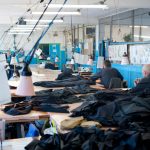Norway Benefits from Rehabilitation, While Australia Lags Behind

Studies have consistently found that sending people to prison significantly increases their chances of offending, rather than reduces it, and that alternatives to imprisonment are more likely to put offenders on the straight and narrow than full time prison custody.
Indeed, UNSW professor of criminology Eileen Baldry told Sydney Criminal Lawyers® last May that her research suggests that just having made “contact with the criminal justice system, makes it more likely that you will have contact in the future.”
However, while this might be the case in the Australian setting, it isn’t a general truth in Norway.
A tale of two systems
In the Scandinavian country, the majority of people who end up spending time in a correctional facility never return to prison. Norway has one of the lowest recidivism rates in the world at just 20 percent.
This means that only a fifth of Norwegian inmates end up back inside within two years of release.
On September 1 last year, there were 3,933 people incarcerated in Norway. This is from of a population of 5.29 million, which makes the imprisonment rate 74 inmates per 100,000 people.
Compare these figures with those in Australia. According to the Australian Bureau of Statistics, in September last year, there were 41,262 prisoners in this country, which has a population of 24.13 million. This puts the imprisonment rate at 216 prisoners per 100,000 people.
And the recidivism rate in Australia is at 44 percent, which means almost half the inmates in the country return to prison. In NSW, 48 percent of inmates return to prison within 24 months of release.
Human rights in closed environments
A fundamental principle of humane treatment is that the deprivation of liberty is the punishment that inmates are subjected to and prisons are not a place for additional punishment.
This principle is reflected in international human rights standards. Article 10 of the International Covenant on Civil and Political Rights outlines that “all persons deprived of their liberty shall be treated with humanity and with respect for the inherent dignity of the human person.”
The document further states that the aim of incarcerating an individual should be the “reformation and social rehabilitation” of the inmate.
The UN Standard Minimum Rules for the Treatment of Prisoners were approved in 1957. These guidelines set out a number of minimum conditions that states should observe whilst detaining individuals, as well as indicating that their human rights must be upheld.
“Utopian” prisons
The Norwegian prison system has a focus on the loss of freedom being the sole punishment that offenders face on the inside. The nation’s prisons are renowned for their humane treatment of inmates, as well as their pleasant living conditions.
The 75 acre Halden prison and the island prison of Bastoy have been described as luxurious. There are no bars on the windows, the kitchens are equipped with sharp objects, and the relationships between prisoners and guards are amiable.
Even the nation’s maximum security prisons have quality living conditions. From the outside these facilities are concrete fortresses. However, on the inside, prisoners’ cells are equipped with televisions, computers, and ensuite bathrooms.
Rehabilitation is paramount in Norwegian prisons, and it’s understood that respecting the human rights of prisoners leads to this goal.
A key aspect of Norwegian prison life is that all detainees have to work, whether that be in kitchen, the laundry or at some other job. And facilities also run vocational programs aimed at helping inmates get employment after prison. These include wood-work and assembly workshops.
Work is the key
A 2016 University of Bergen study found that offenders who are sentenced to prison in Norway are less likely to reoffend.
The Social Cost of Incarceration project revealed that five years after conviction, there was a 27 percent lower risk that offenders who had served time would commit another crime, compared with those who were given non-custodial sentences, such as probation or community service.
For the 60 percent of inmates that weren’t employed prior to being convicted, there was a 46 percent decline in reoffending. And the proportion of these prisoners who were employed five years after release was 40 percent higher than those who received more lenient sentences.
Professor Katrine Løken, who led the research project, put the impressive results down to the “extensive use of labour training” on the inside. And while this sort of training could be conducted on the outside, she said that research showed it was more difficult to enforce.
Prisoners’ rights in Australia
The concept that prison is the punishment, and is not a place for further punishment is also well established in Australia.
The 1978 Royal Commission into NSW prisons asserted that “while in prison, the inmate should lose only his liberty and such rights as expressly or by necessary implication result from that loss of liberty.”
However, the human rights of Australian prisoners are only protected under the law in a few jurisdictions.
Section 9 of the ACT Corrections Management Act 2007 outlines that prisoners’ rights are to be respected and protected, that detainees should be subject to humane treatment, and that they shouldn’t have to undergo torture, or cruel, inhuman or degrading treatment.
And the Victorian Charter of Human Rights and Responsibilities Act 2006 specifies in section 22 that those who are deprived of their liberty must be treated in a humane manner.
The deprivations of the Australian system
Australian correctional facilities have long been renowned as environments where those deprived of their liberty are also subjected to further deprivations.
The 2014 Victorian Ombudsman Investigation into Deaths and Harm in Custody found that “the likelihood of prisoners being physically or sexually assaulted or self–harming leading to deaths is greater now than at any time in recent years.”
And herein lies one of the major problems with the Australian prison system: even if punishments aren’t being meted out by authorities, the environment within these facilities leads inmates to lose their basic rights to safety and freedom from harm.
And the list goes on
The Australian prison system is also bursting at the seams. The overcrowded environment means that prisoners are not only deprived of adequate living conditions, but they’re also in circumstances that can lead to increased tensions, as well as violent confrontations.
And the recent Royal Commission into the protection and detention of children in the Northern Territory outlined that the system in that jurisdiction “failed to comply with the basic binding human rights standards in the treatment of children and young people.”
The commission was established after incidents of torture at Darwin’s Don Dale youth detention centre were reported in mid-2016.
Increased oversight
The Australian government ratified the Optional Protocol to the Convention against Torture (OPCAT) last December. This means the government is now obliged to open up that nation’s detention facilities to random independent inspections from both national and international bodies.
This system aims to prevent the abuse and mistreatment of people being held within the nation’s places of detention.
However, while adherence to the OPCAT should bring about better outcomes in regard to the treatment of detainees in Australian prisons, the system will still fall far short from producing the sort of rehabilitative results that its counterpart in Norway is producing.








